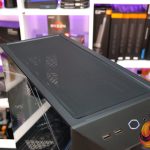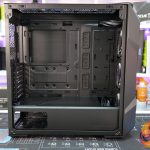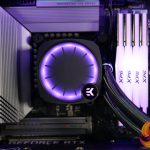
Cooler Master's TD500 Mesh has proved to be a popular case since its launch a few years ago, but hardware demands change quickly in this industry so cases need to keep up with the times to continue selling. Because of this, Cooler Master has introduced an updated version of the popular TD500 Mesh and named it the TD500 Mesh V2. But how does the V2 improve on the V1 and does it still offer good value? Let’s find out.
Watch via our Vimeo channel (below) or over on YouTube at 2160p HERE
Timestamps:
00:00 Start
00:37 Intro
01:44 What’s new vs V1?
02:47 Front and side panel
03:59 Mobo tray area
04:55 Radiator / cooler support
06:03 A word on GPU support
07:28 Rear / PSU shroud
09:08 Removable top panel
10:10 Behind the mobo tray
12:43 Feet and bottom of the case
13:03 Cooler Master GEM
15:03 Test hardware
17:02 Build Timelapse
21:25 James’ thoughts on the build
23:11 Thermal testing
24:51 James’ minor issues
27:39 Closing thoughts
To look at the TD500 Mesh V2 you could easily mistake it for the original. In terms of the visuals not much has changed at all. It still has the Polygonal FineMesh front panel design, it comes with three CF120 ARGB fans pre-installed up front and features the Crystalline tempered glass side panel like the original. But there have been some subtle changes, the case is a little taller, the top panel is now removable, there's a cover for the PSU shroud window and USB type-C has been added to the front I/O panel.
The TD500 Mesh V2 is available in white and black colour schemes. Our review sample arrived with a Cooler Master Gem accessory, but retail models will not come with the GEM. Both the white and black versions come with Crystalline tempered glass side panels and are priced at £99.95, there’s no premium to pay for white like there is with some cases.
Cooler Master MasterBox TD500 Mesh V2 Features:
- TD500 Mesh V2 is equipped with a Polygonal FineMesh front panel with a 3D effect contour design which is capable of providing high airflow and dust filtration, so there’s no need for an additional dust filter up front.
- Users can choose between black or white versions to best suit their setup. Either version comes with three CF120 ARGB fans pre-installed behind the front panel.
- Added support for USB Type C front connection with a USB 3.2 Gen 2 Type C port alongside two USB 3.0 Type-A ports now on the front panel. The original TD500 Mesh had only USB Type-A front panel ports.
- As well as three ARGB fans, Cooler Master includes an ARGB/Fan hub with the TD500 Mesh V2. The hub supports up to 4 fan header connections and 5 3 pin 5v ARGB connections with the front panel reset switch re-purposed to become an RGB control button. The hub also supports motherboard RGB control.
- TD500 Mesh V2 features a new removable top panel to improve accessibility during system assembly and easier mounting of cooling hardware. The case also supports dual radiator installation up to 360mm long or up to 3 x 120 mm/2 x 140mm fan installation in both the front and top panels.
- A full-cover power supply shroud with a front cut-out for long radiator installation and a PSU window with a removable cover allows the user to choose whether to show or keep the power supply hidden.
- Native compatibility with all desktop motherboard types including Mini-ITX, Micro ATX and ATX. E-ATX motherboards are also supported with dimensions up to 12” x 10.7”.
Specifications:
- Exterior Color: Black, White
- Materials: Steel, Tempered Glass Mesh, Plastic
- Size: Mid-Tower
- Dimensions (L x W x H): 499 x 210 x 500mm (incl. Protrusions), 430 x 210 x 477mm (excl. Protrusions)
- Volume: 50L (excl. Protrusions)
- Motherboard Support: Mini ITX, Micro ATX, ATX, SSI CEB, E-ATX
- Expansion Slots: 7
- 5″ Drive Bays: 2
- 5″ Drive Bays: 3
- I/O Panel: 2x USB 3.2 Gen 1, 1x USB 3.2 Gen 2 Type C, 1x Audio Jack 1x ARGB Fan Control
- Pre-installed Fans: Front 3x 120mm CF120 ARGB
- Fan Support: Top 3x 120mm/2x 140mm, Front 3x 120mm/2x 140mm, Rear 1x 120mm
- Radiator Support: Top120mm/140mm/240mm/280mm/360mm, Front 120mm/140mm/240mm/280mm/360mm, Rear 120mm
- Clearances: CPU Cooler 165mm, PSU 200mm (Recommended up to 170mm), GFX 410mm
- Cable Routing: Behind Motherboard Tray 19mm / 0.74″
- Dust Filters: Front, Top, Bottom
- Power Supply Support: Bottom Mount, ATX
- Warranty: 2 years
Thermal Performance Testing
To simulate thermal demand we run the Cinebench R23 multi-thread benchmark and 3DMark Time Spy Extreme stress test simultaneously in a loop for 60 minutes to fully load the system. This gives the CPU and GPU enough time to reach constant steady-state temperature. With this data, we can compare how the system handles the thermal demand and measure peak noise levels.
Thermal performance is measured with the case in various configurations, such as the default, with the tempered glass left-hand side panel removed and with the front panel removed to see how these configurations affect the CPU and GPU temperature. During testing, only stock case fans are used unless otherwise specified. All water pumps are set to maximum RPM and fans are set to a custom RPM curve by the Motherboard software/BIOS.
All temperature measurements are presented as Deltas – meaning the ambient temperature has been deducted from the CPU temperature giving us a Delta. Data shown in the charts represent the average component temperature over the length of the test as measured by HWiNFO and then the last 15 minutes of the data are calculated to get the average. The ambient temperature during thermal tests is between 20-22⁰C.
Test System:
- CPU: Intel Core i9-12900K
- Motherboard: Gigabyte Z690 Gaming X DDR4
- Memory: 32GB XPG Spectrix D50 Xtreme DDR4-4800
- Graphics Card: RTX 3080 Aorus Master
- Storage: 1TB PNY XLR8 CS3040 PCIE Gen4 NVME M.2 SSD
- Power Supply: Seasonic Focus PX-850 850W 80+ Platinum
- CPU Cooler: EK-Nucleus AIO CR360 LUX D-RGB
- Chassis: Cooler Master MasterBox TD500 Mesh V2
Thermal Performance/Noise Overview:
Thermal Performance:

With the 12900K running at stock frequency, CPU package power is around 205W. The Cooler Master TD500 Mesh V2 was able to keep CPU temperature well under control. With the case in its default configuration, the average CPU temperature under load was at a very respectable 50°C Delta.
Removing the front panel had little effect on CPU and GPU temperature, but as we often see, removing the side panel offered a slight improvement in both CPU and GPU temperature. Adding a rear fan had no positive effect on thermal performance. So in its default configuration, the case flows air well and is able to keep high-end components cool.
Noise:
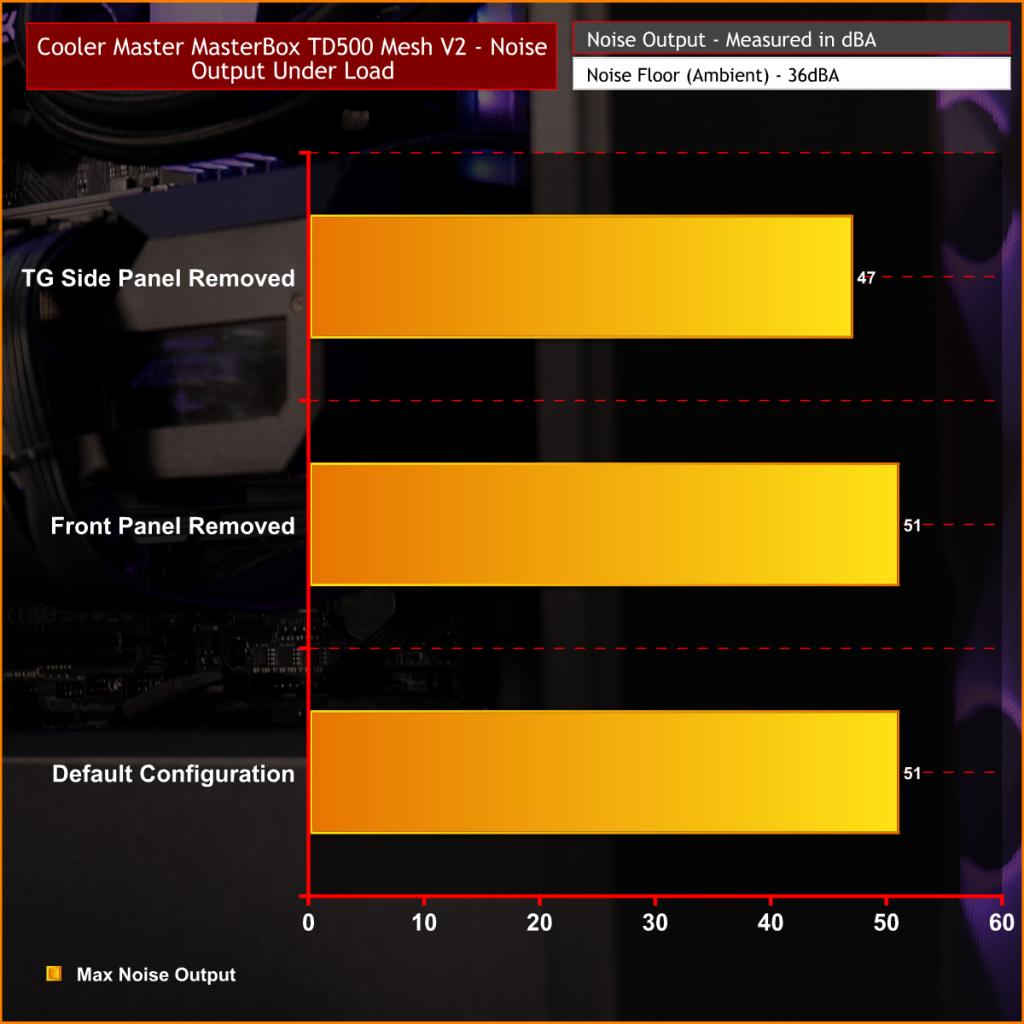
As usual with case noise testing, removing the side panel lowers noise since the fan RPM is reduced due to the cooler temperature of the components. With the case in its default configuration noise output was measured at 51dBA which could become a little distracting for some users. Manually tuning the fan curve may be required to keep noise output more comfortable.
Closing Thoughts
Installing a system into the Cooler Master MasterBox TD500 V2 is a simple and pleasing process. Cooler Master has everything laid out in the correct positions, everything is where you would expect it to be. Alignment of PCIe slot cutouts, motherboard standoffs and fan screw holes etc are all good, nothing was difficult to install due to alignment issues, which can be a problem on some cheap chassis.
During our thermal performance tests the case held up well, keeping the high-end CPU and GPU nice and cool even under the extreme load that we put the system under. Yes, that is down to the excellent EK-Nucleus AIO CPU cooler in part but a good cooler needs a good airflow-optimised chassis to operate to its full potential. The Cooler Master Polygonal front mesh seems to allow ample cool air into the system.
Build quality of the case is OK, some panels are a bit flimsy such as the right-hand side panel and the case is very lightweight, but once the system is installed and side panels bolted on it feels pretty sturdy, there are definitely worse built cases on the market for sure. The quick-release glass side panel is a nice touch and saves having to get around the back of the system to remove fiddly screws.
There are one or two minor negatives to the case that could become a problem if a more complex system is being built inside, but nothing majorly wrong that would stop me from using this case again. Most of the issues are due to the width of the case which is very narrow at just 210mm wide. There is only 19mm space for cable management on the right side, which is the bare minimum in our view.
Adding more SATA devices and accessories that need extra power connections and cables could make cable management tricky. Our test system is a basic build but there was still only just enough space between the 24-pin cable and the case side panel, anything more and you might start to have difficulty fitting the side panel and see some side panel bulge.
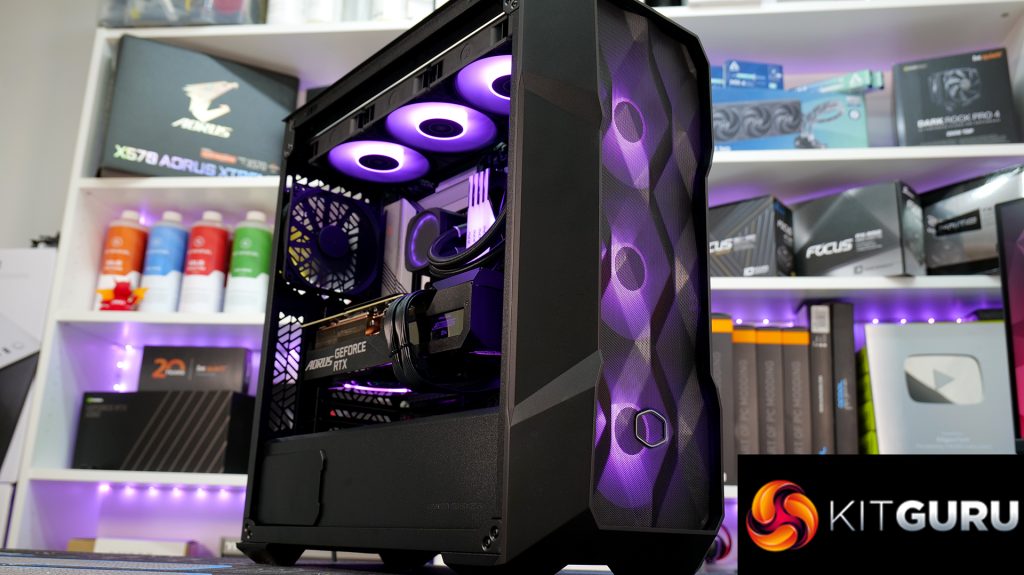
The narrow case design also means that users could run into space issues with some new Nvidia RTX 40 series cards. There is only 175mm space between the motherboard standoffs and the TG side panel. Our test system card measures 140mm wide, when installed and connected to PCIE cables there isn’t much gap to the side panel. A wider RTX 40 card using a 12VHPWR adaptor cable could be pushing the case limits and the cable could be trapped against the side panel.
We worked out that the average width of Nvidia RTX 40 series cards (4080/4090) is approximately 150mm, add on 30mm or so for the adaptor cable and you could run into problems with space using the TD500 Mesh V2. So if you are planning on using this case with one of those cards just be sure to double-check the dimensions including the space needed for the 12VHPWR cable to be at a comfortable angle.
One other thing worth mentioning is the RGB control button. Unlike most case RGB hubs that switch between a manual button and motherboard RGB control by holding in the RGB/Reset button for a few seconds, the Cooler Master RGB hub doesn’t have this capability. If you want to control RGB lighting with the switch you must not connect the motherboard header cable from the hub to the motherboard.
Other than those minor issues, the Cooler Master MasterBox TD500 Mesh V2 is a decent budget chassis. If you like the looks of the original TD500 Mesh then you will like this too, as they're almost identical. It handles the cooling of high-end components very well, supports a wide range of hardware and is a nice case to build a system with. There are cheaper cases on the market with similar features but at just under £100 it isn’t going to break the bank so if you are in the market for a case in this price range it is well worth a look.
The Cooler Master MasterBox TD500 Mesh V2 is available to buy now from Overclockers UK now priced at £99.95 HERE.
Discuss on our Facebook page HERE.
Pros:
- Good airflow and thermal performance.
- Supports high-end hardware.
- Dual 360mm radiator support.
- Useful removable top panel.
Cons:
- Some Nvidia RTX 40 series cards might not fit.
- Minimal space for cable management.
- Some panels feel a bit flimsy.
KitGuru says: A few minor changes to the chassis have certainly improved things compared to the original. However, it is still a fairly narrow ATX case which may compromise some builds. Will any of you guys be buying one?
 KitGuru KitGuru.net – Tech News | Hardware News | Hardware Reviews | IOS | Mobile | Gaming | Graphics Cards
KitGuru KitGuru.net – Tech News | Hardware News | Hardware Reviews | IOS | Mobile | Gaming | Graphics Cards




